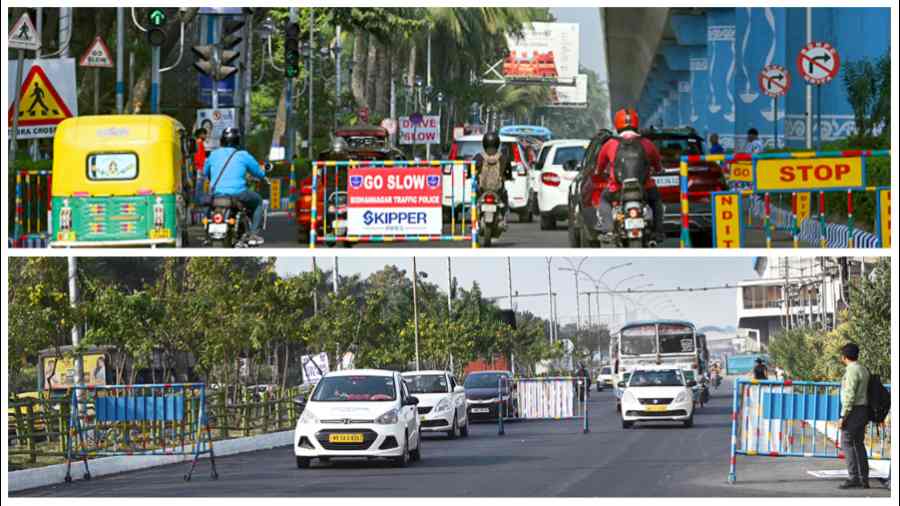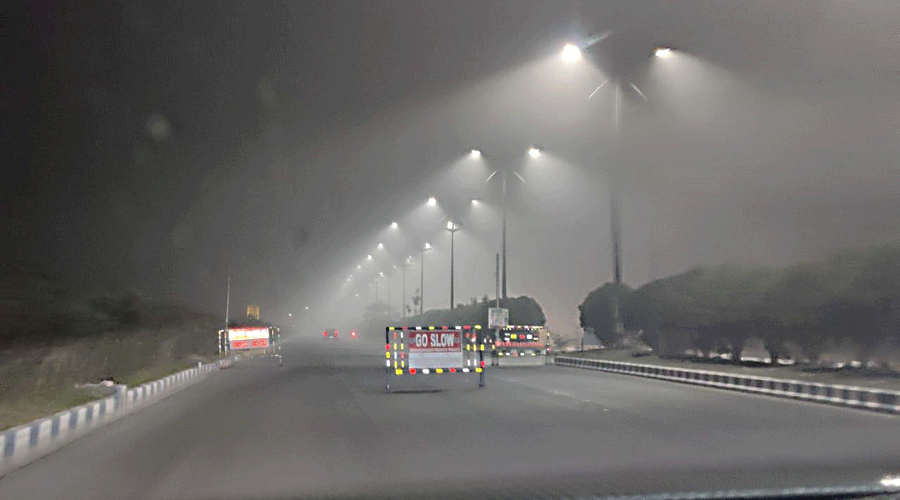Guard rails made of metal should not be placed on roads to curb speeding because they can cause serious injuries if vehicles accidentally hit them, said a professor of civil engineering at IIT Kharagpur who specialises in road safety.
Bhargab Maitra, who has been engaged by the state government multiple times to advise on traffic issues, listed a whole lot of things that are wrong with guard rails.
Anything that is placed on the road to reduce the speed of vehicles, apart from a surface hindrance such as a speed-breaker, should ideally be made of plastic, fibre or vulcanised rubber, the professor said.
According to Maitra, these objects should be painted in yellow and black as they are the easiest to spot from a distance in all conditions, including when the road is enveloped in fog.
Besides, anything that is placed on the road to make motorists slow down should ideally be fixed with a flashing red light so they give a clear warning during the day and, especially at, night.
Across Kolkata, guard rails are painted in blue and white, which may not be visible from a distance under the blue sky.
At night the problem multiplies manifold. Even the ones that have retro-reflective tapes on them are difficult to spot from a distance as more often than not guard rail surfaces are covered in dust, grime and soot. According to Maitra, the flow of traffic on a carriageway where there are traffic lights and zebra crossings must not be hindered by placing guard rails, which eat into road space.
“Traffic infrastructure like traffic lights, zebra crossings and stop-lines all work in tandem to warn motorists to slow down or stop. There is no need to augment this system by placing guard rails that eat into road space and hinder smooth flow of traffic,” Maitra said.
“Speed-cutters (such as guard rails) should only be erected in places where there are no other provisions to prevent a clash between pedestrians and vehicles. Ideally, they should be placed in front of a school, college or any other institution in front of which there is a high volume of pedestrian traffic. The purpose is to warn motorists to slow down. These can be erected outside other public places as well, which have a high volume of pedestrian movement on the road in front,” Maitra said.
He stressed that the guard rails should be removed even from those places during non-rush hours, when the pedestrian flow decreases.
Kolkatans complain that the police place guard rails on roads arbitrarily. Senior traffic officers said guard rails served the dual purpose of streamlining traffic and warning motorists about pedestrians.
In the city, approaching a flyover at night is nothing short of a skill test as cars need to weave in and out of a set of guard rails.
“I have often seen motorists struggle to negotiate these chicanes. The thumb rule is to ensure that there is adequate spacing so that even inexperienced drivers can negotiate them,” said Maitra.
The Indian Roads Congress specifies three types of guard rails — for pedestrians, median dividers and the moveable ones mounted on wheels. There are specifications for each.
“Sadly, throughout the state these specifications are hardly adhered to,” Maitra said. There have been multiple fatal accidents across the city involving traffic guardrails. A traffic officer on Monday defended Kolkata’s guard rails.
“Without guard rails, it is impossible to run checks for drink-driving or to ask a driver to slow down and show documents if necessary,” the officer said.


